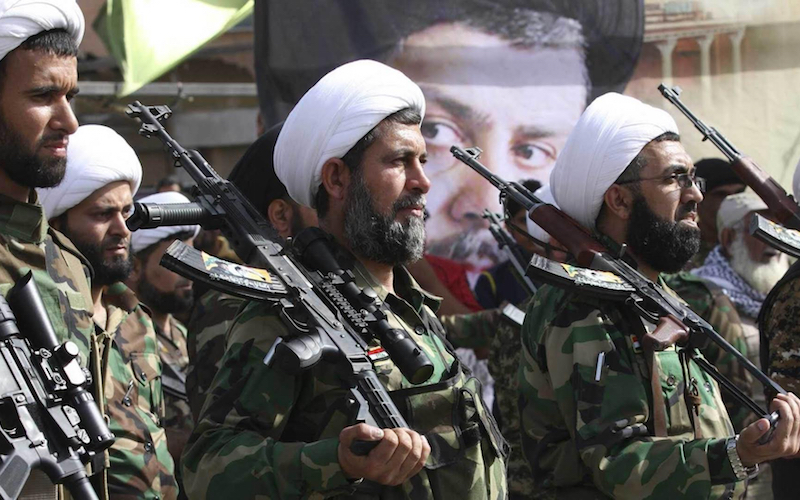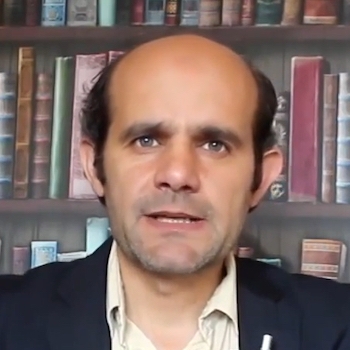
Religion for the Sake of Realism: Iran and the Arabs
Persia and Iran, whether as an empire or a state has always been a big regional power in the Middle East. When the Arabs conquered Persia in the seventh century, it became an important part of the new Islamic empire. The integration between the Arabs and Persians inside the Islamic empire was great; considerable numbers of Muslim scholars were Persians or of Persian origin. However, Persian patriotism remained strong among many people from different backgrounds. Their influence inside the Islamic empire during the Abbasid Caliphate was unprecedented and soon reached the heights of political governance, which contributed heavily to the Arab caliphate’s weakness – and eventually to its fall at the hands of Moguls in 1258AC.
When the ruler of Muslim Persia (the Safavid Empire) adopted and imposed Shi’ism upon his subjects in 1500 AC, it was a new important phase in Muslim history. Here, the antagonism between the Persians and the Ottomans (Turkish, Arabs, and all other Sunni ethnic groups) took another dimension, which was of a religious or sectarian nature. Hence, the Safavid Empire became a totally separate and independent entity from the Muslim nation, and was always at odds with the Ottoman Empire. The enmity at this stage developed from long-standing tensions between the Arabs and Persians to a palpable schism between Shia Persians on one hand, and Sunni Arabs or Ottomans on the other.
Contemporary Iran throughout the Shah’s reign was very much a Persian secular regional power seeking to dominate the region on the basis of traditional realism principles, such as increasing its military capabilities through its alliance with great powers like the United States.
The division between Sunnis and Shias in the region was almost disregarded during that period; after the revolution in 1979, Khomeini continued to adopt the realist doctrine for the sake of regional hegemony, while also relying on different means. Khomeini as a Shia Imam or Ayatollah declared his coup, or movement against the Shah, as an Islamic revolution in an attempt to manipulate the religion in order to sustain his revolution nationally and to export it regionally. The war with Iraq during 1980s consolidated his rule internally, but prevented its expansion regionally for some years.
Khomeini was seeking to achieve two fundamental gains from his revolution: the first was polarity in the Islamic world, for Iran to become the mother-nation for all Muslims worldwide. The city of Qum in Iran became parallel to the city of Najaf in Iraq as the main centre for Shi’ism in the world. Some Iranian conservative elites never hide their desire to label the city of Qum as the ‘Mother of Villages.’ This great status has always and solely been for one city in the Muslim world: Mecca. Nevertheless, polarity in the Muslim world has to have a political dimension in order to attract Muslim loyalty or passion, Shias and Sunnis alike, so Iran since 1979 has played a leading role in the anti-West and anti-Israel campaign. It has also supported the Palestinian issue and the Arab struggle against Israel; Iran became the prime supporter for resistance movements such as Hamas, Al-Jihad Al-Islami, and Hezbollah. Such a position has indeed attracted the hearts and minds of the most Muslims around the world.
Following the July war in 2006 between Hezbollah and Israel, Ahmadi Najad was the second most popular ruler in the Middle East after Bashar al-Assad. The second main goal was galvanising the Shia communities around the world and mainly within Arab countries, so Iran was able to gain the loyalty of most Shia in the region, dividing Arab society severely, particularly in the countries that contained considerable Shia communities, like Iraq, Lebanon, Bahrain, Kuwait, and Saudi Arabia. In addition, Iran has consistently engaged in promoting Shi’ism in some Arab countries with small Shia communities, such as Syria, Egypt, Sudan, Algeria, and Morocco, because Shi’ism is the most effective means for Iran to penetrate societies in Arab countries; to break the already feeble social harmony between their peoples.
Iran does not want to be like the Vatican for Shia, nor does it want to be their guardian or their godfather; in fact, Iran wants to hijack Shia communities in the Muslim world for political purposes and solely for its national interests. It does undoubtedly seek an overwhelming domination in the Middle East, at the expense of weakening other countries in the region, both socially and politically.
Iran was unable to export its revolution to the Arab world through direct conflicts and wars after losing the war with Iraq in the 1980s. Saddam Hussein was the strongest barrier to this direct approach, so building a web of loyal religious proxies through galvanising, mobilising, and supporting Shia communities in the region – and through promoting Shi’ism within the Muslim world – was seen as a successful alternative strategy for Iran to dominate the region.
After the collapse of Saddam Hussein, Iran reaped the fruits of its strategy in Iraq and in the region as a whole. It was able to control Iraq through installing its disciples as the new governors of the country, ironically with the endorsement of the West and the United States in particular. The behaviour of Hezbollah in Lebanon and Syria, the Houthis in Yemen, and the Iraqi government and its Shia militias since 2003, serve Iranian regional ambitions and furthers its dreams of regional domination. All these counties have become failed states, not because of foreign influence, but mainly because of breaking down of the social contract between their people. Iran supports the Shia in those countries to kill or persecute their fellow citizens, which paves the way towards more divisions and more discords inside these unstable states.
It must be acknowledged more than 35 years after the Iranian revolution that this revolution was not an asset to the Muslim nation. In fact, it was the beginning of a new phase of re-galvanising the Sunni-Shia dispute, breaking down Arab societies, and thus destabilizing their countries. It was a movement based on reviving the Persian Empire on the back of Shi’ism, so the Shia communities in the vast Sunni ocean of the Arab world became like a Trojan Horse, working for Iran and its national interests. In other words, if the Shah Family were still in power, the Arab world would not be undergoing such vicious sectarian wars that serve only the interests of Israel and Iran.

